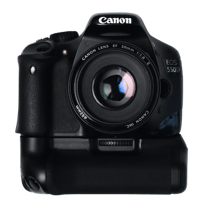
There are many things that can be focused on when performing an energy efficiency audit. To perform a comprehensive energy audit all aspects of a building should be taken into consideration. Factors such as insulation, water usage, heating and cooling efficiencies and lighting are just a few of them. Today I will focus on performing a lighting audit.
When performing a lighting energy efficiency audit one must first learn what goals the customer has in mind. Determining if the customer is looking to maintain or increase light levels will play a key role when making product recommendations and making more sales. Once the customer’s goals are clearly understood the lighting audit will need to be performed. There are five useful tools everyone should have with them when performing a lighting audit.
When performing a lighting audit one must first learn what goals the customer has in mind. Determining if the customer is looking to maintain or increase light levels will play a key role when making product recommendations and making more sales. Once the customer’s goals are clearly understood the lighting audit will need to be performed. There are five useful tools everyone should have with them when performing a lighting audit.
Light Meter
A light meter will determine the lumen output of the existing light fixtures. Readings should be taken in multiple areas of an existing space. This information will help determine what should be used to replace existing fixtures and will provide quantitative data to the customer showing what was accomplished with the new lighting.
Infrared Distance Sensor
This tool will allow you to accurately measure ceiling heights indoors, pole heights outdoors, and building mounted fixture heights. When putting together a photometric analysis later in the process this information will be vital. Using an infrared distance sensor will take out all of the guesswork.
Hand Held Counter Clicker
When counting hundreds of light fixtures it is easy to lose count or to lose your place. Using a hand held counter clicker allows you to easily walk through a space and click every time one passes under a fixture. Accurate fixture counts will be important when determine the ROI of a project and when working with energy rebates/incentives.
 Digital Camera
Digital Camera
Taking photos of existing fixtures and of the space as a whole is very helpful. A digital camera will allow one to zoom in on part numbers that can help determine lamp types. The ability to review photos of fixtures and the space layout will be helpful when making product recommendations.
Energy Efficiency Audit Software
There are many products on the market that will assist in performing an energy efficiency audit. The ability to input data from the audit and perform calculations that determine energy usage and cost makes the process of determining the ROI of the project much easier. Most software allows you to input information on the existing lighting along with information for proposed new lighting. It will then provide a comparative analysis showing cost and reduction of energy consumption over a specified period of time.


